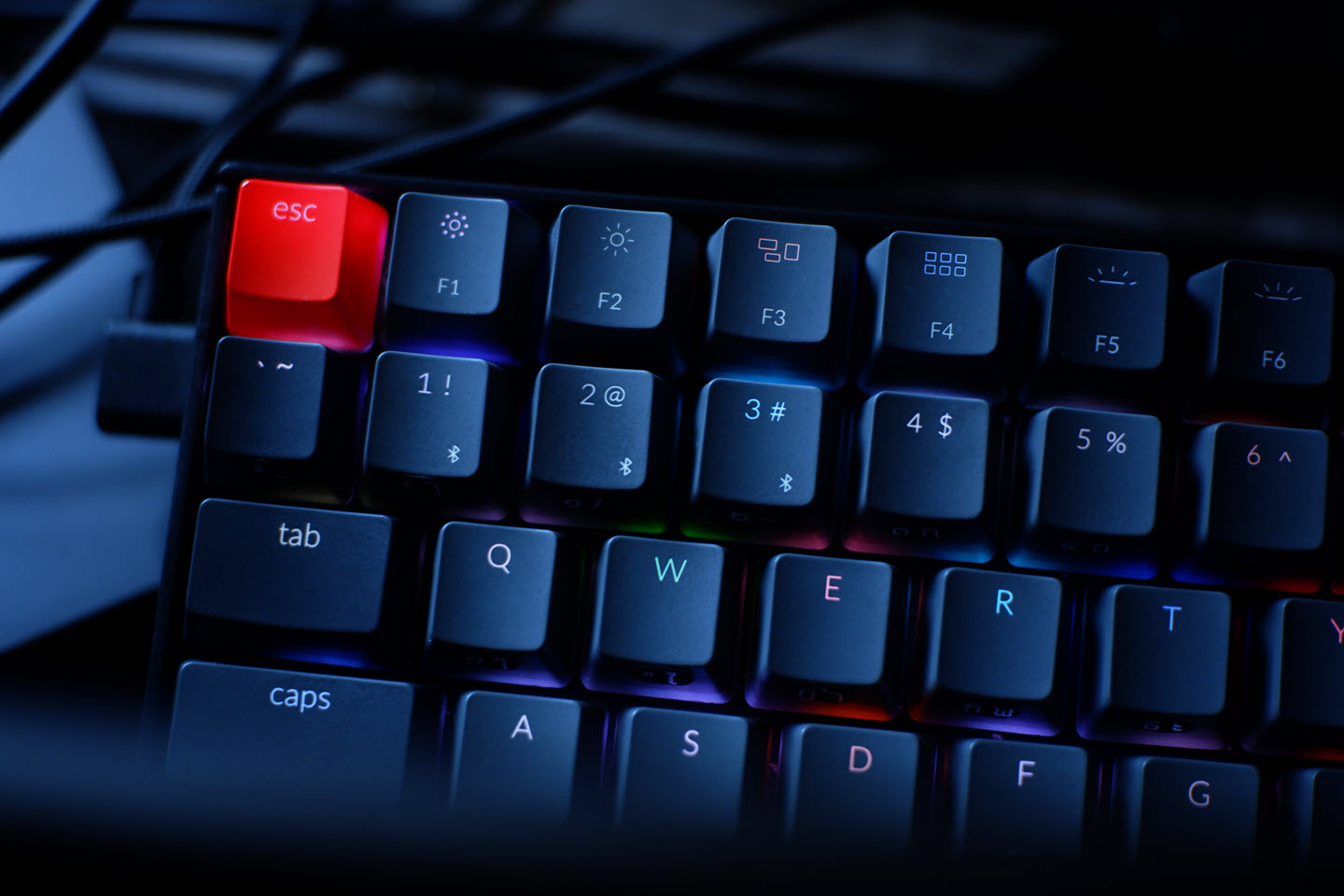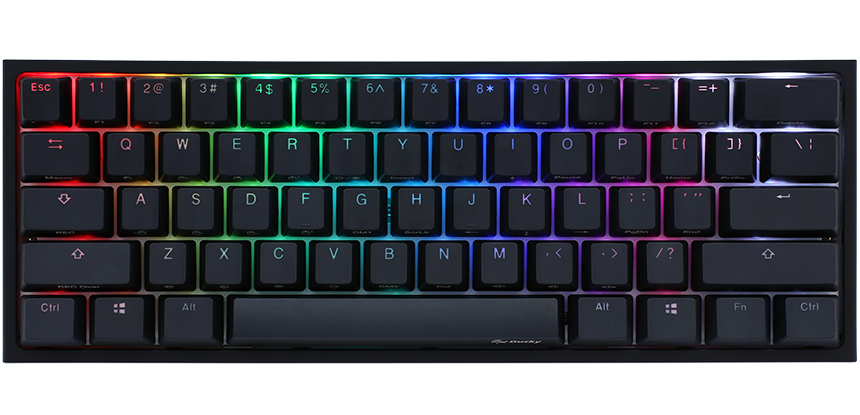Keyboard switches are the essential components that determine the feel and sound of a keyboard. They are the mechanisms beneath each keycap that register a key press. These switches vary greatly in terms of tactile feedback, actuation force, and, crucially, noise levels. Understanding the different types of keyboard switches is integral for users seeking the optimal typing experience, whether for work, gaming, or general use.
The primary categories of keyboard switches include mechanical, membrane, and hybrid switches. Mechanical switches are celebrated for their durability and the distinct tactile feedback they offer. They contain individual mechanical components beneath each key, providing a more satisfying and precise typing experience. However, this often comes at the cost of increased noise, which can be a concern in quieter environments.
Membrane switches, on the other hand, are quieter and more cost-effective. They employ a thin membrane layer that registers key presses through electrical contact. While they are generally less noisy, they lack the tactile response and durability of mechanical switches, making them less popular among heavy users and gamers.
Hybrid switches aim to combine the best of both worlds, incorporating elements of both mechanical and membrane designs. They offer a balance between tactile feedback and noise reduction, making them a versatile option for various user preferences. These switches often include features like rubber domes or specialized materials to dampen sound without significantly compromising on performance.
For many users, the quest for the quietest keyboard switches is driven by the need to maintain a peaceful workspace or avoid disturbing others. Each switch type presents unique advantages and trade-offs, making it essential to understand their characteristics before making a choice. This guide will delve deeper into the specifics of these switch types, focusing on their noise levels and identifying the quietest options available.
Why Quiet Keyboard Switches Matter
In today’s fast-paced world, keyboard noise can be a significant distraction, especially in environments where concentration is paramount. Quiet keyboard switches are becoming increasingly popular for several reasons, making them an essential consideration for both professionals and casual users alike.
In office environments, the incessant clacking of mechanical keyboards can disrupt workflow and hinder productivity. Employees often work in close proximity, and the cumulative noise can be a source of frustration. Quiet keyboard switches mitigate this issue by reducing audible keystrokes, thus fostering a more serene and focused work atmosphere.
Shared living spaces also benefit from silent keyboards. Whether you live with family, roommates, or a partner, the sound of typing can be intrusive, especially during late-night hours. Quiet keyboard switches enable users to work or game without disturbing others, promoting harmony within the household.
Late-night typing is another scenario where quiet keyboard switches shine. For individuals who find their most productive hours in the dead of night, a quiet keyboard switch can make all the difference. The reduced noise level ensures that others in the household are not disturbed, allowing for uninterrupted sleep while the user continues their tasks.
Personal preference plays a significant role as well. Some users simply prefer the feel and sound of quieter switches. The tactile feedback of certain quiet switches can be more satisfying and comfortable over extended periods, reducing finger fatigue and enhancing the overall typing experience.
Moreover, the benefits of quiet keyboard switches extend to productivity and comfort. A quieter workspace minimizes distractions, allowing for better focus and efficiency. Additionally, the reduced noise can contribute to a more relaxed and stress-free environment, ultimately enhancing overall well-being.
In essence, quiet keyboard switches are not just about reducing noise; they are about creating a conducive environment for productivity, comfort, and harmony, making them a valuable investment for anyone seeking a quieter and more efficient typing experience.
Types of Quiet Keyboard Switches

When it comes to quiet keyboard switches, several options stand out for their ability to minimize typing noise without compromising on performance. Among the most popular choices are Cherry MX Silent Red, Cherry MX Silent Black, Topre switches, and other notable brands. Each type offers a unique feel, actuation force, and noise level, catering to different preferences and typing styles.
Cherry MX Silent Red switches are renowned for their smooth and linear keystroke. They require an actuation force of 45 grams, making them ideal for fast typists and gamers who prefer a light touch. The built-in dampening technology significantly reduces noise, making them one of the quietest options available. Similarly, Cherry MX Silent Black switches offer the same dampening technology but with a higher actuation force of 60 grams. This makes them suitable for users who prefer a firmer keystroke while still enjoying a quieter typing experience.
Topre switches, a premium option, blend the best of mechanical and rubber dome technologies. These switches are tactile and provide a cushioned feel, thanks to the electrostatic capacitive mechanism. They typically require an actuation force of around 45 grams, though this can vary slightly depending on the model. Topre switches are praised for their exceptionally quiet operation and durability, making them a favorite among professionals who type for extended periods.
Other notable brands contributing to the market of quiet keyboard switches include Razer, Logitech, and SteelSeries. Razer’s Orange and Yellow switches offer tactile and linear options, respectively, with built-in dampening to reduce noise. Logitech’s Romer-G switches are designed for gaming, combining a quiet keystroke with a responsive feel. SteelSeries’ Whisper-Quiet switches also provide a silent typing experience, catering to both gamers and professionals.
In conclusion, the variety of quiet keyboard switches available ensures that there is an option to suit every user’s needs. From the smooth Cherry MX Silent Red to the premium feel of Topre switches, these options provide a quieter, more enjoyable typing experience without sacrificing performance.
Comparing Mechanical and Non-Mechanical Quiet Switches
When it comes to selecting the quietest keyboard switches, both mechanical and non-mechanical options offer distinct advantages and drawbacks. Understanding these can help you make an informed decision based on your specific needs and preferences.
Mechanical switches, particularly the quieter variants like Cherry MX Silent Red or Razer Yellow, are favored for their tactile feedback and longevity. These switches are designed to minimize noise without sacrificing the robust typing experience that many users appreciate. Mechanical switches typically have a longer lifespan, often rated for tens of millions of keystrokes, making them a durable choice for heavy typists and gamers. However, these switches can be more expensive, which may be a consideration for budget-conscious buyers.
On the other hand, non-mechanical alternatives such as membrane and scissor switches offer a different set of benefits. Membrane switches are known for their affordability and quiet operation. They use a pressure pad system that reduces noise but often lacks the tactile feedback of mechanical switches, which can be a drawback for some users. Scissor switches, commonly found in laptop keyboards, strike a balance by providing a quieter experience with better feedback than membrane switches, though they still fall short of the tactile sensation offered by mechanical switches.
In terms of noise reduction, non-mechanical switches generally outperform their mechanical counterparts. However, the trade-off often comes in the form of reduced durability and a less satisfying typing experience. Membrane switches, for instance, are typically rated for fewer keystrokes and may wear out more quickly with heavy use, whereas scissor switches offer moderate durability but are still not on par with mechanical options.
Cost-wise, non-mechanical switches are generally more affordable. This makes them an attractive option for those on a tight budget or those who prioritize noise reduction over other factors. Mechanical switches, while more expensive, offer enhanced durability and a superior typing experience, which can justify the higher cost for many users.
Factors Influencing Switch Noise
The noise level of keyboard switches is influenced by a multitude of factors, each contributing to the overall auditory experience of typing. One primary factor is the materials used in switch construction. Switches made from high-quality, durable plastic tend to produce less noise compared to those made from cheaper, brittle materials. Additionally, the type of metal used in the switch’s spring can also affect the noise; softer metals often result in quieter operations.
The design of the switch housing plays a crucial role as well. A well-engineered housing that fits tightly around the internal components can minimize the lateral movement of the switch, thereby reducing noise. Conversely, a poorly designed housing may cause rattling sounds, which can be particularly noticeable during rapid typing sessions. Some manufacturers include dampening components such as rubber O-rings or silicone pads within the switch to further absorb sound and reduce the overall noise level.
Keycaps are another significant factor. The material and thickness of keycaps can influence the sound produced when keys are pressed. Thicker keycaps made from PBT plastic are generally quieter than thinner ABS keycaps, which tend to produce a louder, more hollow sound. The shape and design of the keycap can also impact how sound resonates through the keyboard.
Beyond the switch and keycap design, external factors also play a role in the perceived noise level. The surface on which the keyboard is placed can amplify or dampen the sound. A hard, reflective desk surface will likely make the keyboard sound louder, while a softer, absorbent surface such as a desk mat can help muffle the noise. Typing style is another variable; aggressive typists who bottom out their keys will naturally produce more noise than those who type with a lighter touch.
Understanding these factors can help users make more informed decisions when selecting a keyboard, especially if minimizing noise is a priority. By considering the materials, design, and external influences, one can effectively find the quietest keyboard switches to suit their needs.
Quietness Enhancements and Modifications
For those seeking a quieter typing experience, several modifications can be employed to reduce keyboard noise. One of the simplest and most effective methods is adding O-rings to the keycaps. These small rubber rings are placed on the keycap stems to soften the impact when the key is pressed and released, effectively dampening the sound.
Lubing switches is another popular technique. By applying a thin layer of lubricant to the moving parts of the switches, friction is reduced, resulting in smoother keystrokes and less noise. This method requires some technical know-how, but numerous online guides can help beginners through the process.
Using a desk mat underneath your keyboard can also contribute to noise reduction. Desk mats not only provide a comfortable typing surface but also absorb sound, minimizing the clatter that can occur when typing on a hard surface. Opt for a mat made of thick, dense materials for the best results.
Choosing specific keycap profiles can further reduce noise. Keycaps with a lower profile, such as DSA or XDA, often produce less noise compared to taller profiles like SA. The material of the keycaps also plays a role; PBT plastic is generally quieter than ABS plastic, providing a softer sound with each press.
For those willing to delve into more advanced modifications, switch films and sound dampening foam are excellent options. Switch films are thin layers of material placed between the top and bottom housings of the switches to tighten the fit and reduce wobble, leading to a quieter and more stable keystroke. Sound dampening foam can be placed inside the keyboard case to absorb vibrations and further reduce noise.
By implementing these enhancements and modifications, users can significantly improve the quietness of their keyboards, creating a more pleasant typing environment without sacrificing performance or comfort.
Top Quiet Keyboards on the Market
✔ Razer Mechanical Switches
✔ RGB lighting
✔ Compact layout
❌ No dedicated media keys
❌ Razer Synapse software
✔ Hot-swappable switches
✔ Bluetooth and wired connectivity
✔ Mac compatibility
❌ Software can be buggy
❌ RGB lighting may not be as vibrant
✔ Cherry MX switches
✔ Compact and portable
✔ RGB lighting with various effects
❌ No Bluetooth connectivity
❌ Limited customization options
When it comes to selecting a keyboard with quiet switches, several models stand out due to their exceptional features, build quality, and positive user reviews. Here, we explore some of the top quiet keyboards currently available, helping you make an informed decision.
First on our list is the Logitech MX Keys. This keyboard is renowned for its low-profile scissor switches, which provide a remarkably quiet typing experience. The Logitech MX Keys is also praised for its sleek design and robust build quality. Users appreciate the comfortable typing experience and the backlit keys, which are particularly useful in low-light environments. Additionally, the keyboard supports both Windows and macOS, making it highly versatile.
Another excellent choice is the Razer BlackWidow Lite. Equipped with Razer’s Orange mechanical switches, the BlackWidow Lite offers a tactile feel while minimizing noise. The keyboard features a compact, tenkeyless design, making it ideal for both work and travel. Users commend its detachable cable and the option to use O-ring sound dampeners for an even quieter typing experience. The Razer BlackWidow Lite also comes with customizable white backlighting, enhancing its usability in dimly lit settings.
The Keychron K8 is another top contender, particularly for those who prefer a mechanical keyboard. It features hot-swappable switches, allowing users to swap out the default Gateron Brown switches for quieter alternatives like Gateron Silent Brown or Red switches. The Keychron K8 boasts a solid aluminum frame and supports both wireless and wired connections. Users highlight its long battery life and customizable RGB backlighting as standout features.
Lastly, the Ducky One 2 Mini is a 60% mechanical keyboard that has garnered praise for its Cherry MX Silent Red switches. These switches significantly reduce noise without sacrificing the tactile feedback that many typists and gamers enjoy. The Ducky One 2 Mini is compact yet highly durable, with a dual-layer PCB and customizable RGB lighting. Users appreciate its portability and the high-quality PBT keycaps, which are resistant to wear and shine.
Each of these keyboards offers unique features and quiet switches, catering to different user preferences and needs. By considering these options, you can find the perfect quiet keyboard that enhances your typing experience while maintaining a peaceful environment.
Conclusion: Finding Your Perfect Quiet Keyboard Switch

Choosing the right keyboard switch can significantly enhance your typing experience, especially if you are in an environment where noise levels matter. As discussed throughout this comprehensive guide, understanding the various types of quiet keyboard switches available is crucial. Whether you are a professional typist, a gamer, or someone who simply enjoys a quieter workspace, selecting the appropriate switch based on your specific needs and preferences is essential.
We have explored several popular quiet keyboard switches, including linear and tactile options, each offering unique benefits. Linear switches, known for their smooth keystrokes, are ideal for fast typists and gamers seeking minimal resistance. On the other hand, tactile switches provide a subtle bump, which can be beneficial for those who require feedback during typing without the accompanying noise of clicky switches.
Moreover, the importance of considering your specific use case cannot be overstated. For instance, if you frequently type in shared spaces or during late hours, a quieter switch can help maintain a peaceful environment. Similarly, gamers who require both precision and silence may find linear quiet switches particularly advantageous. Therefore, it is recommended to try out different switches if possible, either through sample kits or visiting stores, to find the one that feels most comfortable and meets your expectations.
In conclusion, the journey to finding your perfect quiet keyboard switch is a personal one, influenced by individual preferences and requirements. By taking the time to understand and test various options, you can ensure a more satisfying and efficient typing experience. Remember, the right switch not only enhances performance but also contributes to a quieter and more pleasant workspace.






